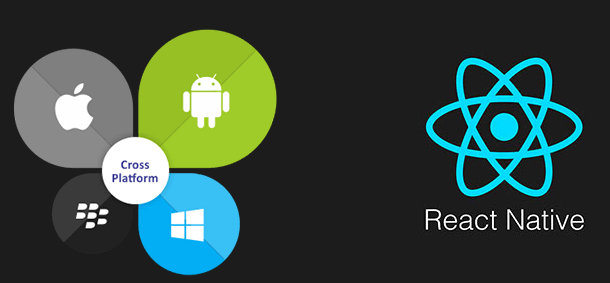The Right Technology Can Make a Big Difference for Your App: Flutter vs. React Native.

Reliable. Flexible and swift high value. React Native is one of the few programming languages that can accomplish so much in such little time. In this primer, we outline the reasons that any company owner should think about moving their software to this flexible language.
Do you recall the infamous posts from 2016 regarding Airbnb ending its React Native support? Or the well-known React Native retreat that Udacity held in 2018?
Many people thought React Native was too abrupt. Build times may be excessive. Apk sizes that are too big and potentially difficult integrations can confuse users. A lean, mean, and incredibly versatile language, however, is hiding beneath the grime and dust and is eager to give.
Think about Coinbase’s phenomenal success after switching to React Native for a moment. Many of the early misunderstandings and incorrect actions were eliminated by their clear understanding of the merits, cons, and context surrounding React Native.
Their knowledge enables us to reduce our queries to the following basic ones:
Ø How does React Native function? What is it?
Ø When does using React Native make sense for your company’s projects?
How does React Native function? What is it?
Story of React Native
The phrase first appeared on Facebook in 2013. It became a programming tool that used JavaScript to create real native apps.
It worked exceptionally well when business logic and flow control from JavaScript were combined with native UI components to achieve the same performance as standard iOS and Android apps!
To put it briefly, developers perceive React Native as a quicker and cleaner approach to create responsive, flexible cross-platform apps that function and feel like native ones. It shouldn’t be a surprise that numerous Fortune 1000 organisations and early-stage startups have used it.
REACT IS NOT REACT NATIVE.
The inherent misunderstanding between React and React Native needs to be cleared up in order to fully understand how React Native functions: Despite being closely related, they are NOT the same even though they both originated from Facebook developers.
An introduction to React (React.js)- It first featured in 2011.React is a JavaScript library and web application framework. It combines a quick, novel method of producing a responsive online user interface with JavaScript. React Native employs the React syntax and ideas to enable the creation of installable apps, with the React concept serving as its central organising principle

Pros and cons of React Native
With a seamless and dynamic design, the React Native user experience
is comparable to that of a native app. But there’s no disputing that it
needs some fixes.
ü Short learning curve
React Native makes it simple for front-end web developers to transition to creating mobile applications. They are prepared if they are knowledgeable of platform-specific APIs, design patterns, and native UI components.
ü Clear reasoning
JavaScript is used by React Native’s intelligently designed SDK to power both the native user interface layer and business logic. The same app logic can be used across platforms by developers to produce a more seamless user experience. Here’s an example of how React Native may be useful for making fantastic animated experiences.
ü Efficiency
Maintaining separate Android and iOS code bases would be more expensive and time-consuming than using React Native.
ü Genuine performance
React Native provides better performance, more fluid animations, and avoids browser compatibility problems as compared to alternative hybrid app development technologies.
CONS
All platforms have their restrictions. There are valid reasons for developers and businesses to abandon React Native
Apps built using React Native will perform nearly as well as those built with native code. For the majority of users and use cases, the difference is undetectable, but it is noticeable in graphically demanding or large data processing situations, such as 3D.
ü Licensed by third parties
React Native is based on an open source framework and employs a wide range of projects with various owners and licences. Your legal team might examine this activity more closely as a result.
ü Working around features
Developers may need to perform additional native engineering to access some iOS and Android platform capabilities because React Native doesn’t always receive access to the newest and greatest features right away.
ü A few components are missing
As of right now, RN does not provide support for gadgets other phones and tablets, such as Apple TV or Apple Watch.
ü Concerns about enduring issues
Although Facebook’s support and React Native’s enormous popularity provide some reassurance, it is impossible to predict whether React Native will be supported in 10 years.
One should not always assume abandonment to be true.
Famous companies like Udacity and Airbnb making defeat-related admissions ruffle feathers. Their posts make it plain that they had issues with React Native, with how cumbersomely it integrated with Android, and with its major organisational flaws.
There’s more to it, though.
It’s likely that some of the development teams working for these organisations are still fired up about React Native’s possibilities in the long run. After all, experimenting with new tools and learning from them is a popular strategy used by businesses when attempting to modify or invent their own development technique.
What business model drives React Native applications?
Here are some queries you should take into account when defining app strategy with a partner:
1. Installation: What steps must be taken to install the application?
2. Control: What degree of control does the user possess?
3. Experience: Describe the kind of user experience you can imagine.
4. Platform: Do you intend to support functionality across platforms or are you designing for a single piece of hardware?
Even in general, Cordova, Ionic, Xamarin, and even Native script cannot compete with React Native’s potential for high-quality cross-platform development (for native platforms).
Future use of React Native
Your internal objectives and expectations will determine whether React Native is the best option for your app strategy.
React Native helps most businesses establish a balance between user experience and accessibility. It nearly seems possible to create native apps without incurring the huge expenditures associated with creating and maintaining separate code bases for Android and iOS.
Where the difficulty first appears
Most businesses attempt to approach React Native projects with an in-house team. This isn’t necessarily a good idea, as we’ve seen with Udacity and Airbnb.
There may be a variety of causes. For instance, it’s not always possible to put together an internal team with the knowledge and abilities to create anything in react native or to improve an already-existing native platform.
How to overcome this difficulty
Working with an accomplished agency that has the credentials to support their React Native experience makes more sense in almost every situation.
React Native presents some very specific problems, and only experienced developers will be able to successfully navigate them, saving you not only a tonne of money but also a tonne of time during the development process.
Therefore, we suggest that you schedule a free consultation with a member of our team if you have a concept that you’d want to see come to life with React Native. They have a wealth of expertise in developing React Native apps, and they might be able to help you identify planning omissions early on.
And this might be your safest move in a sector that rewards early adopters more than anything else.
